- Where to Buy Whole Brisket Online - July 25, 2022
- Skirt Steak vs Flank Steak – Big Differences? - April 6, 2022
- Strip Steak Vs Ribeye: Which is Better for Date Night? - April 2, 2022
Is this new cut worth the hype or is this a clever way of raising the cost of Chuck?
If you are a steak coinsure you have most likely heard of Omaha steaks, Nebraska steaks, New York strip, and London broil among others. However, I am sure that some of you saw the title of this article and asked yourself, what the heck is Denver Steak?
Well, if you have never heard of a Denver Steak you are far from alone. I lived in Denver for 9 years, and I had NEVER heard of this steak. So, when I saw an article comparing a Denver Steak to a Zabuton Steak from Japan I was instantly curious and had to know more.
Now, if you are also wondering what a Zabuton Steak is, I am sorry to overwhelm you with so much information at one time. Sit back and relax. It will be clear as mud in a moment. Ha!
Bottom Line
No matter how you cut it, it is still Chuck beef. It’s nearly impossible to find in your local market and seeking it out online could cost you nearly as much a “true” prime cute. Only you can decide if this bias-cut measures up to its neighboring preferred steak cuts.
What is Denver Steak?

Denver steak comes from a cut under the cow’s shoulder blade in the area on a butcher’s map called the Chuck. The Chuck is known for tougher cuts of meat that need long cooking times at low temperatures. If pot roast came to your mind, you would be correct. That is one of the meats that come from Chuck. This is also the source of meat that is used in beef stew and ground beef. The fat content in this area is rich, so the flavor is preferred in these particular beef preparations.
If the chuck is full of tough cuts why would anyone want a steak from the chuck? Well, a little over 10 years ago the beef industry, along with food, and more specifically meat, scientists got together to see if there was any way to get more premium cuts out of the traditional butchers’ map of cuts.
As it turned out, five new cuts from the Chuck were created from the 1.5-million-dollar study conducted in Florida in 2009. The top find became known as Denver Steak. Why Denver? It is believed that it came to be called the “Denver steak” because it was a scientist from the Cattleman’s Beef Board who created the new cut, and the Cattleman’s Beef Board is hosted in Denver Colorado. No one is directly credited with this name choice, but it was not discovered in Denver. However, marketers know that the right name has the power to grab attention. It made you look, right?
Was this venture a success? Well, that answer is yes, and not yet. Yes, because that same area of Chuck gets about 3 dollars a pound for ground beef. However, if you make “Denver steaks” with the same meat you can get 6 dollars a pound or a tad more. Not yet, because it has yet to gain popularity and it remains hard to find butchers who know how to properly cut this section into steaks.
The meat industry pulls in about 16 billion dollars annually. They know how to get more bang for their chuck!
The Cut

The name of this muscle is the serratus ventralis and it is located under the shoulder blade. Of all the muscles located in the chuck, this is one of the least used and therefore is more tender than the rest. It is now rated as the 4th most tender cut from the cow. What is not immediately revealed about that statement is, it depends on how you cook it.
Spoiler alert! This may be a new cut in the USA but it was already a specialty cut in Japan known as the Zubaton. Zubaton translates to “little pillow” and is the square cushion typically used for seating on the floor in Japan. The Japanese eat less meat than most consumers in the USA and therefore they slice this cut quite a bit thinner and that is one of the keys to keeping this cut tender.
It’s All in How You Slice It
So let’s imagine a Zubaton pillow (square cushion). If your muscle fibers are running East and West, then you will slice your steaks from North to South. You or your butcher must cut this steak cross fiber, or you will have one chewy steak.
These steaks are best between about ½ inch to ¾ inch thick. The typical 1-inch cut does not apply to this steak. If you do find one that is cut at this thickness you can either cut it in half or better yet pound it down a half-inch with a tenderizing mallet.
This is one steak you do not want thick. It will look amazing, but the result will be chewy. Never forget, no matter how you slice it – You are still working with Chuck.
The Price Tag

It is hard to come up with anything definitive here as this is not a cut you can easily find in regular markets yet. This is almost a special order that you will need to pick up from a butcher. If you ask for a Denver steak these days, the butcher will likely know what you mean but even just 8 or 10 years ago you may have gotten a confused look from your butcher.
At butchers who are familiar with this cut, it’s around 6 dollars per pound. However, some butchers may add a fee for a “special cut” which could reduce some of your savings.
I have seen it listed as high as 18.00 dollars per pound. If you see this price for Denver steak, skip it, and ask for a Ribeye instead. Denver steak looks amazing but is a far far cry from Ribeye. It should never be the same cost as a prime cut. Don’t be fooled.
Getting Your Denver Steaks Tender
The Denver steak is nearly the same cut (same area) as the Zabuton steak popular in Japan. When people hear this, they may be a bit misled into thinking this is an amazingly tender beef. However, there is a skill to making tough meats tender. Let’s look at some of the top ways to get your Denver Steaks tender and full of flavor.
Size is not everything.
When it comes to Denver steak, bigger is not better. Zabuton steaks, which are also cut from under the shoulder blade, are cut very thin. Zabuton steak is cut with the muscle grain and quickly seared leaving the inner steak merely warmed up. Then it is cut thinly against the grain and served with a soy sauce-based sauce. Similar to sashimi.
Denver steaks are cut cross-grain from the start so as you cut the beef after it is on your plate you are cutting with the grain. Therefore, you mustn’t start with a thick steak. Your steaks should be ½ to ¾ thick and no more. A 1-inch steak could end up tough and hard to chew. So, opt for thin not thick when it comes to Denver Steaks.
Not for the “well-done” steak lover

It’s not so great for the blue-rare, or rare lovers either. Denver steak has a sweet spot concerning temperature. If you are ready to try the Denver steak you should consider using a good digital thermometer so you can hit the sweet spot.
The sweet spot is medium-rare. According to steak scientists, medium-rare is the ideal temperature for all steaks. Some steaks can handle a variety of doneness to suit every personal taste, but some steaks will become very tough once you exceed the medium-rare temperature range of 130-135 F. Denver Steak cooked to well-done will be tough as wet leather. If you like your steak well-done, Denver steak is not your steak.
What is so magic about medium-rare?
At the temperature of 130 – 135F, the fats from the marbling begin to melt into the meat. The muscle fiber relaxes and there is still moisture in the center. Marinates and rubs are drawn in and you have a nicely browned to a crisp exterior and a soft moist interior. It’s the tipping point where everything comes together but as the temperature rises moisture is lost and the muscle begins to get rigid.
Mallets, blades, and spikes oh my
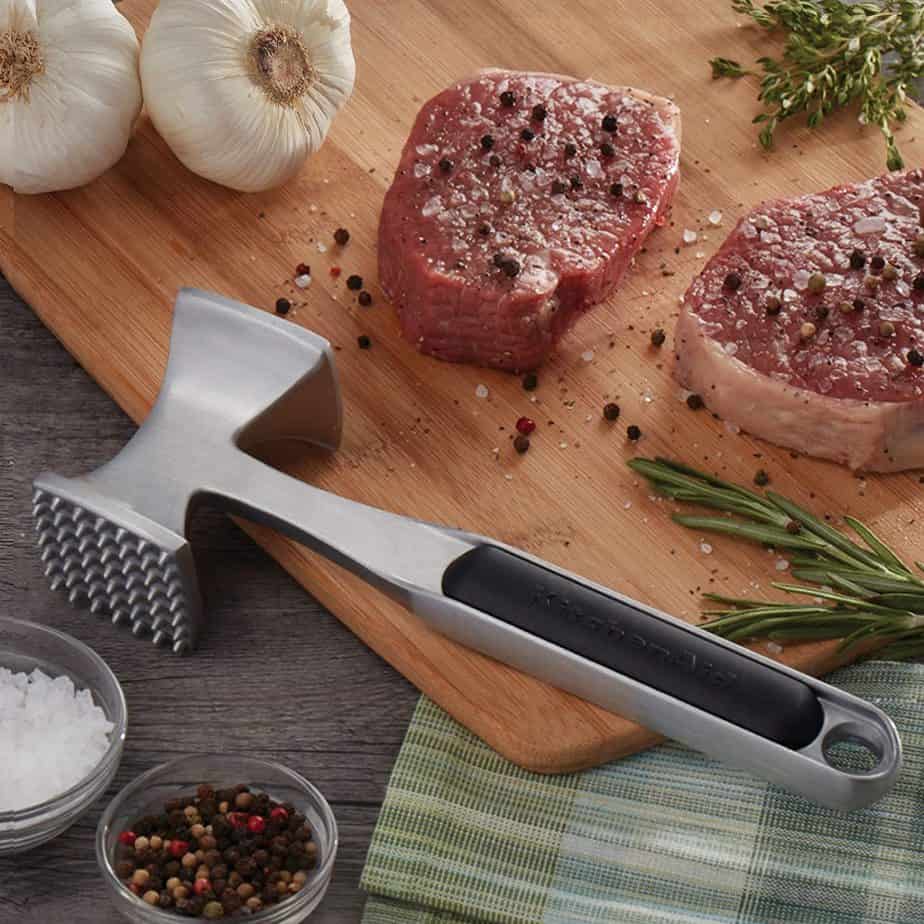
These all work and they work well. Mallets break down fibers and flatten your steak. They are a good option and have a long history of meat tenderizing. They can make it possible for your Denver Steak to handle a little (just a little) greater temperature before it gets tough. By little, I mean medium done only.
Blades and spike tenderizers allow your steak to remain a little thicker while cutting through muscle and connective tissue. This also lets marinade penetrate the full thickness of the steak.
Magic of marinades on Denver Steaks
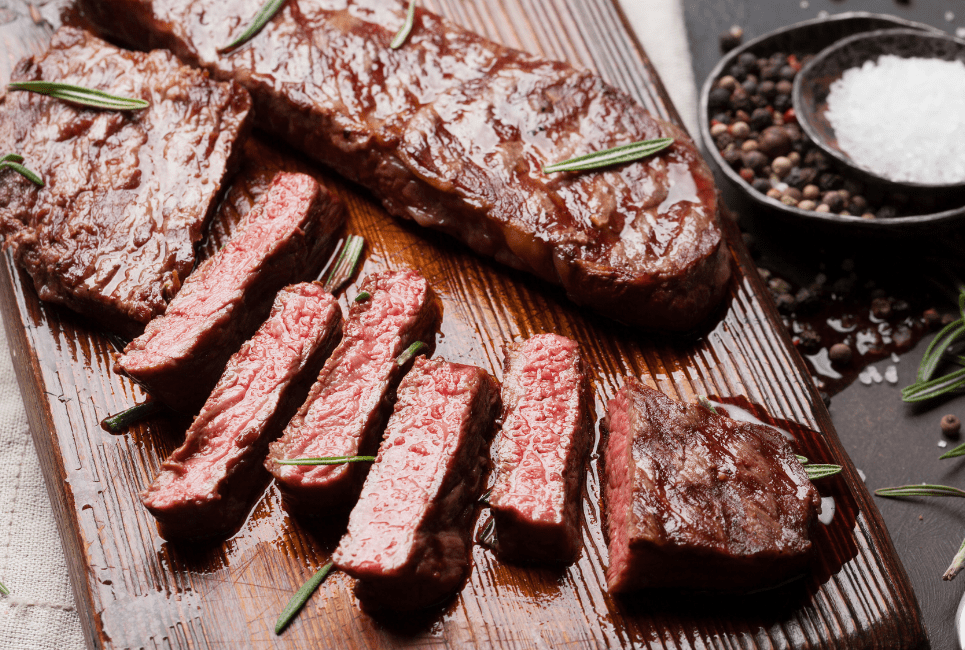
This steak will benefit nicely from a marinade to help relax the muscle fibers and maintain the moisture of the steak. If you already have a favorite marinade, go for it. If you are ready to try something new have a look at the “Best Steak Marinade in Existence” from www.allrecipes.com This recipe has 4,483 ratings and is holding strong at a 4.5-star rating. I have yet to try this one myself, but it is my list “must try”. My list is long.
There is one seasoning that I continue to favor over the many, more complicated, spice combos. That seasoning is simply salt. Salt enhances the flavor of steak, yet it does not disguise it. Salt also has a great ability to keep the steak juicy. The salt you use is, of course, very important.
Never use regular table salt. This is the type of fine white salt that is available in every supermarket for a very low cost. These salts are the type of sodium the doctors warn you about. It tastes like salt, but it is made in a lab, and it is devoid of any beneficial nutrients. It is also very strong in “salty” flavor, and you can easily oversalt your beef.
Instead, go for course salts that are from the sea or mineral mines. These are Celtic Sea Salts, Himalayan Pink Salts, and my go-to salt for everything Colima Sea Salt. When it comes to dry brining or wet brining, you want the good stuff. Some of these salts have been milled “fine” avoid this in your brines. Always choose course salts. You are less likely to over salt steak with coarse salts.
In this informative article on “3 Different Ways to Season a Steak” by MasterClass, you will better understand the different methods of brining steak. It is an excellent and short read. They use Kosher salt in their example. This is also an excellent salt in the Kitchen but by no means is it the only salt you can use.
Where to Find Denver Steaks
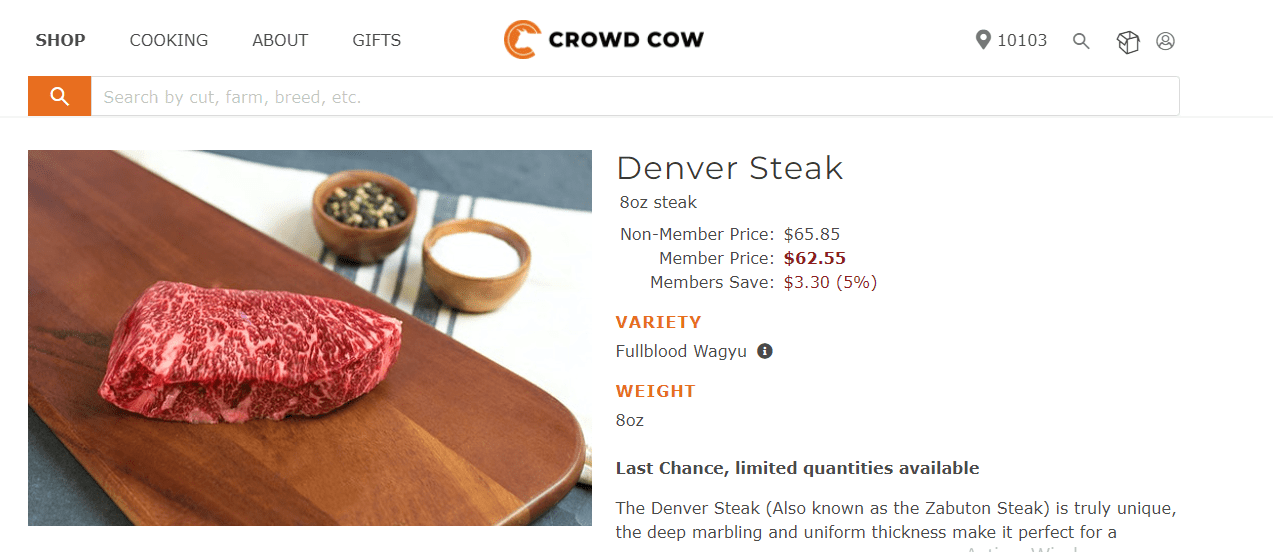
Even though it has been over 10 years since its grand release, it is still not a cut you are likely to find prewrapped in the meat section of your local market. You may need to head for your local butcher and see if they have knowledge of this cut and know how to prepare it for you. If you get a raised eyebrow and a shoulder shrug. Move on. If this is not cut correctly you will only waste your money or you will have to change your plans from grilling to using a crockpot.
Online is still a little challenging too. An Amazon search for “Denver steak” will bring you many images of alternative steaks and steak knives but at the time of this article, not one Denver Steak supplier appeared.
You might think, Oh, I will just look for a “Zabuton Steak” and again you will only find Zabuton cushions, great for sitting on while you figure out how you can get your hands on either steak.
This is one of those times where you are going to have to look beyond amazon and find a special butcher online. Don’t worry, I have you covered.
First up is Crowd Cow. Denver Steak is available from www.crowdcow.com as the demand requires. So basically, if it is not available you will see a “join the waitlist” button, and when the demand is reached they will cut and deliver to the people on the list. So perhaps you may need that “Zabuton Cushion” after all. But if your timing is right, you may only need to wait a day or two for your Denver steak to arrive.
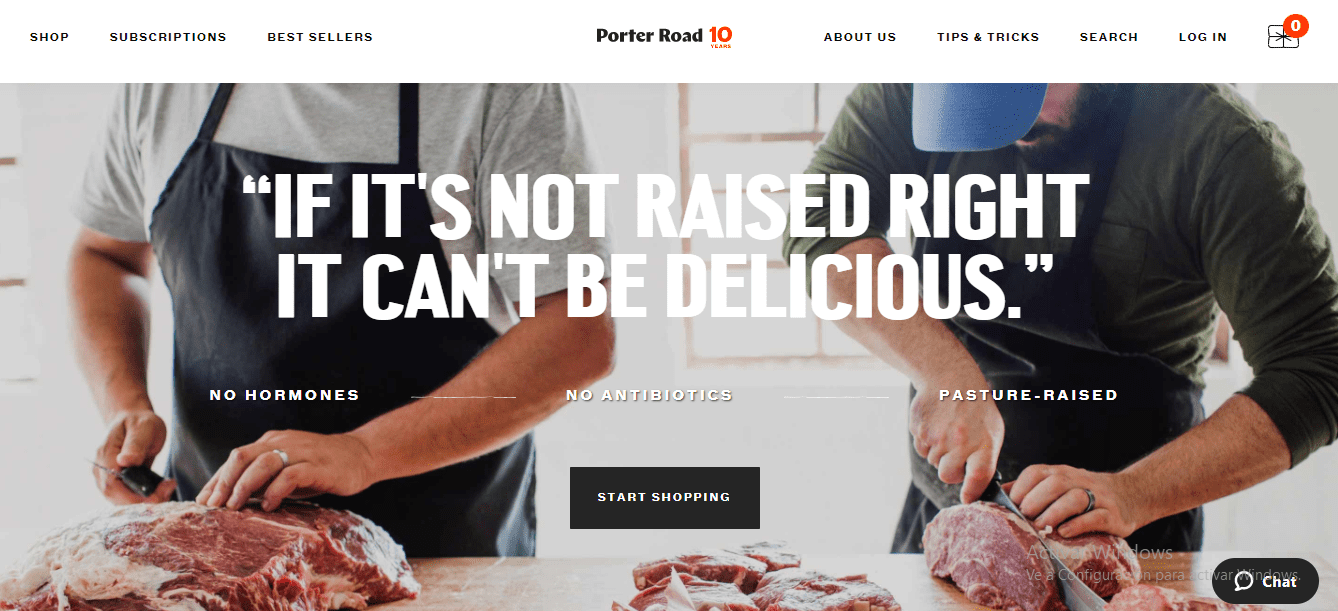
Next up is Porter Road. Denver Steaks from www.porterroad.com are more commonly available but a little more expensive. They pride themselves on great cuts of beef that are also hormone-free, antibiotic-free, pasture-raised, and ethically farmed and managed.
Crowd Cow’s site said, No unnecessary Antibiotics. That says to me, maybe yes, and maybe no. At least they seem to believe in the reduction of its use in their cattle.
Both of these companies have a great following so you are likely to get a top-quality, well-cut Denver Steak to try and see if it is for you.
An Alternative Cut
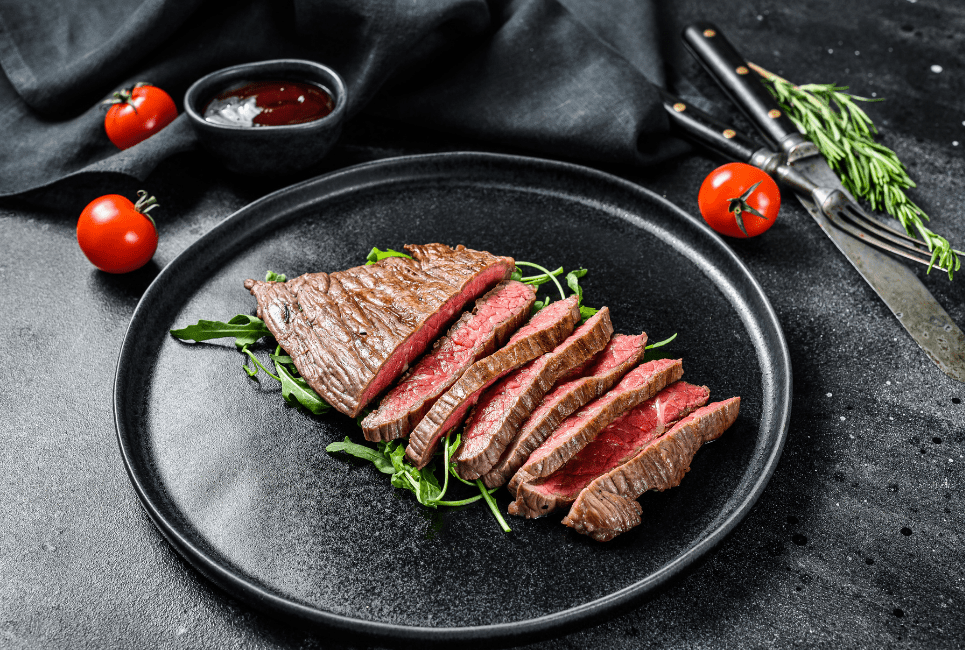
There is another cut similar to the Denver cut but much easier to find in the store and online. It’s called Flat Iron Steak. The Flat Iron Steak comes from the top of the shoulder blade just opposite of the Denver Steak. It is still part of the Chuck.
This is a more common cut and because of its ease of access for the butcher, it requires less handling and keeps the price very budget-friendly. Like the Denver Steak, this cut is better marinated, or salt brined and cooked too medium-rare. Anything beyond medium will be tough and chewy like Denver Steak.
Flat Iron steak, also known as Top Blade Steak, is not a bad alternative to the harder-to-find Denver Steak. Denver steak is simply the Bottom Blade Steak and will be a little more tender than Flat Iron steak.
Do you like Lobster? Check out this Surf and Turf dinner featuring Main lobster tail and Flat Iron steak.
On The Grill
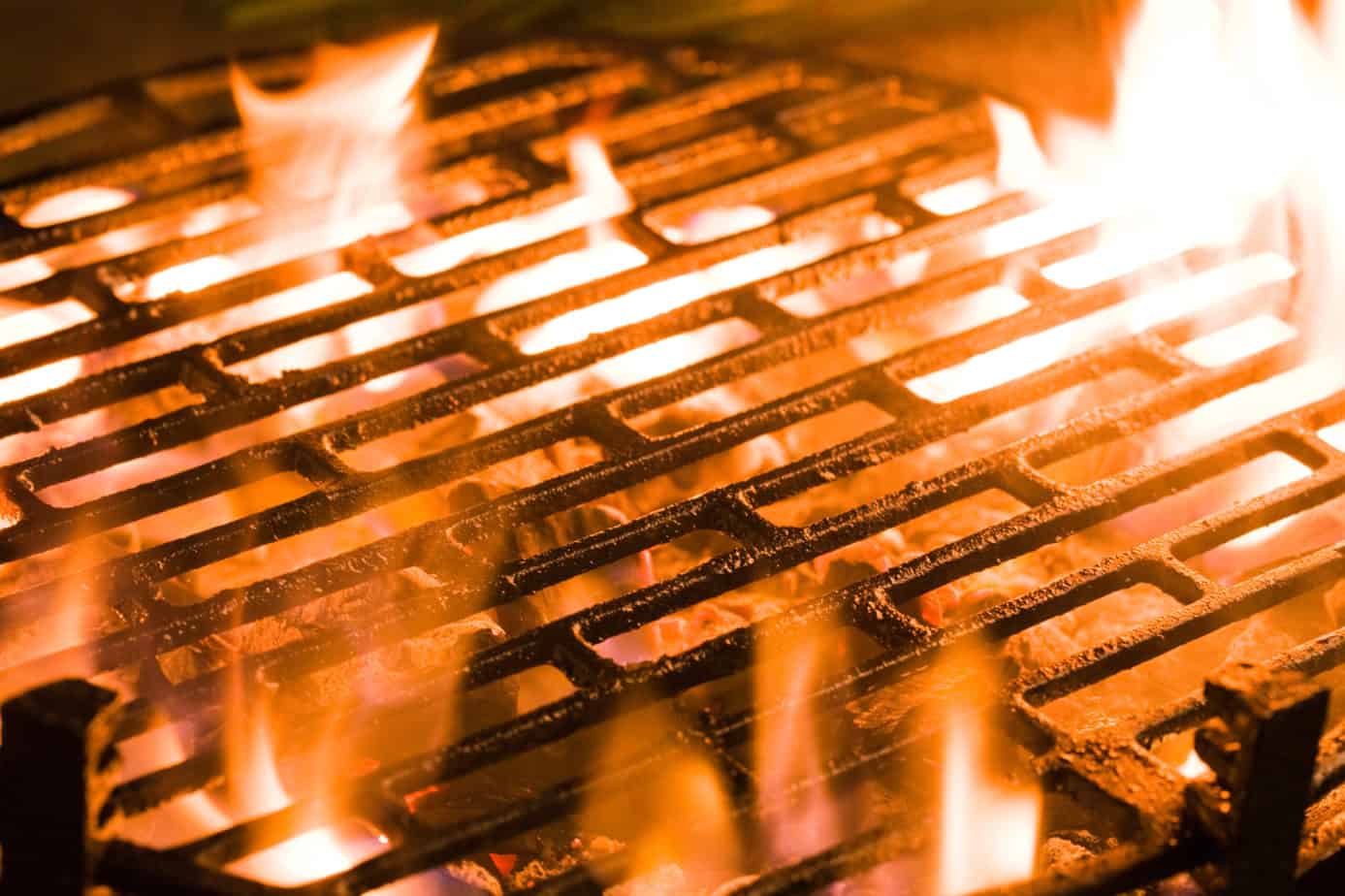
The method is pretty straight forward and whether you have Flat Iron Steak or Denver Steak the method is the same.
Hopefully, you have chosen one of the marination methods above. This is highly recommended with these Chuck cuts.
Remove from your marinade and shake off any access. Allow your steak to come up to room temperature (about 15 minutes). During this time, you can start preheating your grill. Medium-high is good for these steaks, especially if they are on the thicker side.
Coat your grill racks by brushing with some olive or coconut oil (refined coconut oil will smoke less and have almost no coconut flavor but it is great for high-temperature cooking).
Place your steaks on the grill and allow 4 to 5 minutes per side. Monitor your temperature not to exceed 135 F. If you go higher than Medium, you could end up with a tough steak. If you did use a tenderizing mallet or poker, you may be able to go to medium-well, but this is not ideal for Chuck. Better to under than overcook your steak. You can return an undercooked steak to the grill for a minute but once you are over – It’s over.
Remove from the heat and let them rest for 5 to 10 minutes to allow the juices to re-distribute throughout the steak. Serve and enjoy.
Reverse searing works well on these cuts but requires the use of your oven first. If you are curious about how to cook Reverse Searing check out this article from serious eats.
FAQs
Answer: The Denver Steak is a new cut created in 2009 as an effort to bring higher value from the area of beef known as the Chuck. Beef from the Chuck is typically tough and requires long cooking times at low temperatures to get it tender but there is a muscle under the shoulder blade called the serratus ventralis that can be as tender as prime steak if it is cut correctly and not too thick. This cross-fiber cut is nicely marbled with fat and is considered the 4th most tender cut of beef. The key with this cut is not to cook it past medium-rare or it does toughen up.
Answer: No. In 2009 the beef industry with a group of food scientists gathered in Florida to see if they could create some new cuts out of the traditional map of Butchers cuts. Several new cuts were created in general and 5 new ones from Chuck alone. The most prized cut was created by a scientist from the Cattleman’s Beef Board which is based in Denver Colorado. While no one person appears to be credited with naming the cut it is assumed that the name was chosen because of the home base of the board’s find. Also, it is a great marketing name, Think New York Strip, London Broil, Omaha Steaks, Kansas Steaks. Adding a state name or capital to anything in marketing adds value. However, this steak was actually “born” (discovered) in Florida.
Answer: You can use all the same methods as any other steak, Braise, Broil, Grill, Skillet, or Oven. There are two important things to remember when it comes to Denver Steaks. First, you will have much better results if you marinate this cut. Dry brining is also an effective way to keep this steak juicy. Second, this steak is ideal at medium-rare. More done than that will likely be tough and anything under that will not allow the fats to fully integrate with the beef. So, remember this steak is finicky when it comes to temperature.
Answer: This steak has just not taken off in the public eye yet so finding it in the supermarket is hard. You can try your local Butcher. Most Butchers know what a Denver Steak is by now but may have never cut it. It is important that it is cut correctly, or you may get a tough piece of beef. If they don’t know what a Denver Steak is, you should probably move on, but you could also ask for under-blade steak or under-blade center and it means the same thing. However, your best option currently is online from companies that know how to prepare this properly. I recommend croudcow.com and porterroad.com Sometimes you will have to join a waiting list but it’s worth getting this cut correct.
In Summary
Some would say, same cow, different cut. To this, I would agree somewhat. If it looks like a Chuck and is cut from the chuck. It’s Chuck. But, as we have learned from other cultures’ use of beef, sometimes it’s all about how you look at it and, in this case, how you cut it. Denver steak, cut thin and cooked medium-high to the level of medium-rare can be quite a delightful surprise to those who know the tough nature of Chuck.
The original hope of the Denver Cut was to get more value from the Chuck for the meat industry and a low-cost, premium-looking, and tasting steak for the consumer, but this has not been proven as a significant win for either side at this time. This cut is hard to find, and some butchers will charge enough more for the customized cut that you may end up close to the cost of New York Strip, or Ribeye. And if the cost is close enough, you would be far better off spending the extra few dollars for the cuts that are tender no matter how you slice it or cook it.
For now, if you are fortunate enough to find it and skilled enough to cook it right, you will have a great novelty to impress your guests. Anyone who says they are grilling up Denver Steaks for dinner will surely have everyone’s attention and a great conversation piece. Happy Grilling!
Looking for more interesting readings? Check out:

